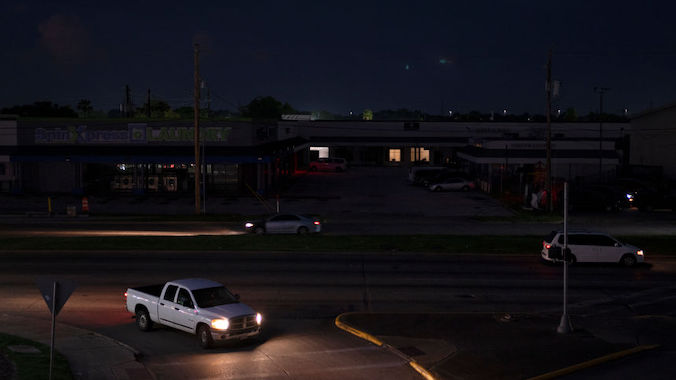It’s the Hot Nights That Will Get You
Photo by Danielle Villasana/Getty Images
It is, of course, very hot outside. Warnings and advisories covered more than 140 million Americans on Tuesday, and almost 30 deaths across the country have already been blamed on the cascading heat waves. That number will rise.
On Tuesday, Washington is forecast to top out at 100 degrees, as is Philadelphia, with heat indexes reaching well into triple digits. New York isn’t far behind at a high of 96, and even Boston is set to hit 94 degrees.
- Bernie Sanders and Some Democrats Get Ready to Lick Elon’s Boots and Practice the Politics of the Past
- NBC Seems to Suggest a Children's Video Game is to Blame for UnitedHealthcare CEO's Killing
- Nancy Mace Is an Irredeemable Garbage Person Who Loves Bullying Vulnerable People and Yet the Media Still Believes Her
The sun going down tonight will offer little relief. It will still be 88 degrees in D.C. at 11 pm tonight; it likely won’t drop below 80 at all. This is part of a brutal and critically important trend: nighttime minimum temperatures in the U.S. have risen by twice the rate of daytime highs in the summer since solid record keeping began in 1895.
That was the conclusion of an analysis by the non-profit Climate Central (disclosure: I used to freelance for them occasionally around a decade ago), which was done in 2023. The group found that 2021 and 2022 ranked as the warmest two years for summer nights in history, and at the time of the analysis, 2023 was already shattering nighttime records at nearly the double the rate of daytime highs. This year, which according to NOAA now has about a 60 percent chance of beating out 2023’s already absurd mark as the warmest year ever recorded, will surely continue that trend.
We need cooler nights to survive the hotter days. Human bodies tend to use sleep time to lower temperatures and recover from a brutally hot day; if temperatures don’t drop enough, people sleeping without air conditioning — or, say, people in major cities that didn’t get their power back for a week after a storm — don’t get that chance. This is, as one might expect, a particularly big deal for elderly people or those with heart or lung conditions. “It’s really the nighttime that is the problem,” one expert told the New York Times a few years ago.
The Climate Central analysis found that the nighttime warming is consistent across the country; 95 percent of the locations it studied had seen warming since 1970, at an average of 3.0 degrees F. Some places are even worse: one quarter of the locations had seen 4 degrees F of warming at night. The worst offenders tended to be in already-hot locales: El Paso’s nights are more than 8 degrees warmer than a few decades ago, and Las Vegas’s jumped by 9.6 degrees F. Reno, Nevada, took the top prize: a remarkable 17.4 degrees warmer nights than in 1970.
Almost 50 million people will experience daytime temperatures above 100 in the coming days. Though the Northeast will soon see some relief, it will linger in the Southeast for some time, and even as wildfires are starting to spread in the scorched West another heat wave is likely to build there soon. The nights may be the worst of it.